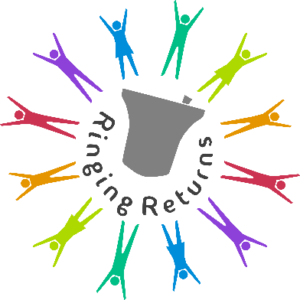When we ring again – preliminary preparations
The time is going to come when we will be able to ring bells again. There is no sign of it yet, and our guidance of 11th May still stands. However is it worth considering what checks we might do before even ringing a single bell. When bells have not been rung for many months, it is very important that ringers arrange to undertake appropriate maintenance checks and any necessary remedial work before we start to ring in every tower.
Even though we may be asked or wish to ring at the first opportunity, it is essential that we make sure that it is safe to do so. We do not wish to cause yet more problems for the NHS and emergency services!
Stay at home may no longer apply, but protect the NHS, save lives must still be a firm resolve!
In addition, in most areas people in the vicinity of the tower have become accustomed to the unusual quiet – the bells have not been rung, many church chiming clocks have stopped, and traffic, aircraft, building and industry noises have all reduced markedly. This is a good opportunity to alert neighbours through the local media.

What to do as we prepare to ring again
First, it must be remembered that the majority of bells are the property of the church, so the Tower Captain should confirm with the incumbent that they agree to ringing recommencing.
We strongly advise that all ringing societies ensure that the conditions in every tower are checked. This includes those towers where there are few or no ringers since for these towers, the correspondents may just be a key holder and they may well not be aware that checks should be undertaken or what to look for. We need to avoid the risk that they could let ringers into a tower many weeks or months after we start to ring again, without any checks being done.
Why are we advising that these checks are done, when no one will have been in the church or tower? Even though this should have been the case, no one will have been aware of what may have occurred – for example:
- The louvres and bird netting may have been dislodged so that birds have entered the tower and built up what can become very large piles of twigs! (see The Ringing World, issue 5631, March 2019)
- Somebody may have entered the tower for some reason, legitimate or otherwise, and left something or removed something such that the conditions in the tower are no longer safe.
- Something may have broken or become dislodged during the period since the tower was last visited and could now be in a dangerous state.
- If the bells were left mouth up, then something may have fallen into a bell, for example rainwater. (IMPORTANT – checks in the bell chamber with bells up will only be feasible in towers where it is safe to move around without any risk of injury while the bells are up.)
For the relatively few towers where bells are usually left mouth up all the time, this may be an ideal time to undertake fuller inspections and any maintenance, whilst the bells are still down and before being rung again.
The schedule is taken from the CCCBR Manual of Belfry Maintenance 2017 (available here https://cccbr.org.uk/product-category/maint-rest/) It is essential that the Weekly, Monthly and Quarterly checks are completed. Also the Annual checks if those have not been done since about September 2019. Once complete, add these checks to the tower maintenance records, as advised on Page 110 of the Manual. If you do not have people who have the necessary skill and expertise to complete the checks, then ask for assistance from your local ringing society (https://cccbr.org.uk/about/members/)
This is also the time to alert local residents that the bells will be ringing again. This can be on the church website, posters on the church notice board, church newsletters and even notes through letter boxes in the surrounding area. Take the opportunity to remind them of normal service and practice times, along with other extra ringing that may be proposed. Invite them to see the ringers in action – it may be the time to recruit some new recruits!
Alison Hodge
Stewardship & Management Workgroup Lead

